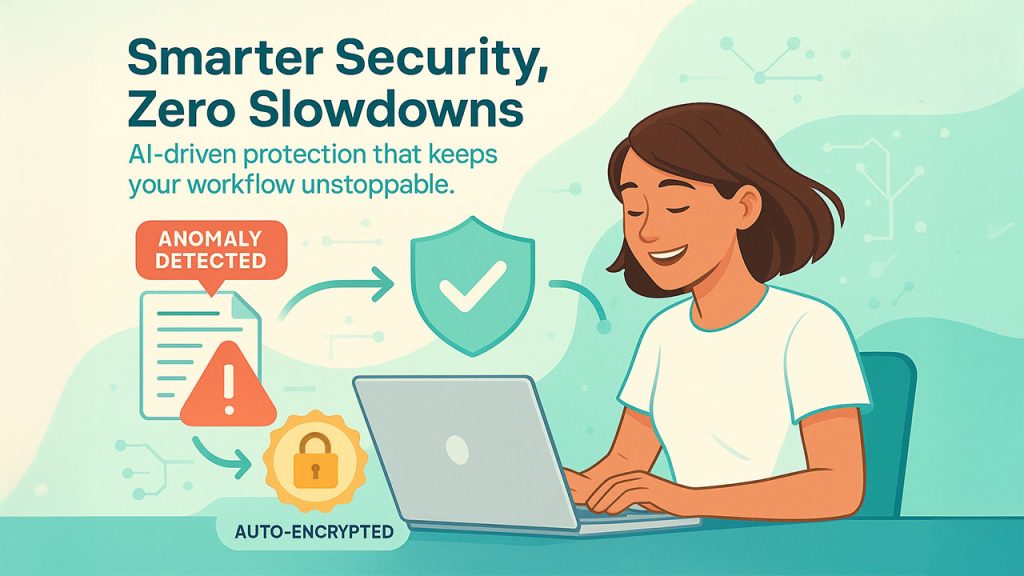In the growing digital world, data is the most important asset that an organization owns and hence, protecting it has become more critical than ever. However, implementing effective Data Loss
In the growing digital world, data is the most important asset that an organization owns and hence, protecting it has become more critical than ever. However, implementing effective Data Loss Prevention (DLP) strategies without disrupting operations of business is challenging for many organizations. What companies must do is strike a balance between maintaining strong security measures and continuing moving forward without unnecessary interruptions. This is where solutions like Mimecast shine by offering advanced protection without hindering workflow.
Effective DLP provides protection against data breaches and cyberattacks. It also ensures compliance with data protection regulations such as GDPR and HIPAA. This article will explore practical approaches for implementing effective data loss prevention strategies which can help businesses maintain efficiency while securing their data.
The Rising Importance of Data Loss Prevention
Increasing cyber threats have made preventing data loss a prioritization for companies throughout the world. A data breach can result in loss of money, reputation, legal repercussions, and loss of customer trust. According to Ponemon Institute's study, an average breach is also more than $4 million. With alarming true statistics, organizations should adopt an all-inclusive Data Loss Prevention (DLP) strategy to protect their organization's critical and sensitive data or information.
Continued organization objectives in the face of innovation and streamlining their operations can be much more challenging for employees. Employees need to access information faster, work together in real-time, and rely on cloud-based tools to complete their work more efficiently. Better automation and technology mean that implementing a strong security posture without compromising employee productivity seems impractical.
This is where an advanced security platform like Mimecast can support organizations in protecting their data while minimizing any potential slowdowns. Mimecast provides an efficient and dedicated security service for protecting sensitive information combining advanced encryption, machine learning, and threat detection for enhanced security with operational efficiency allowing employees to work without disruptions.
Adopting the Right DLP Technology

Finding the right data loss prevention technology is the key to balancing productivity and security. Traditional DLP technology is usually based on a simple rules-based system that blocks the transfer of data based upon keywords, file types, or patterns. Unfortunately, they were not effective for detecting advanced threats or protecting against insider threats.
Mimecast features a smarter approach to data loss prevention. Rather than only relying on rules that were preset, Mimecast utilizes advanced machine learning in threat detection algorithms to identify unusual or anomalous activities and possible threats. Organizations are able to address threats in real-time at each step of the process without delays or needing manual intervention. For example, if a staff member attempts to send sensitive data outside the organization, Mimecast can detect this behavior and automatically apply appropriate security measures—such as encryption or blocking the transfer without affecting the user experience.
The main advantage here is that Mimecast being an intelligent and automated approach does not hinder business operations. It allows employees to continue their work smoothly without constant security alerts or being shut down from performing essential tasks. This is particularly important in industries that are fast paced where time is valuable, and any interruption can lead to significant financial consequences.
Implementing DLP Policies That Don’t Disrupt Business Flow
Advanced tools such as Mimecast can identify and prevent data breaches in real-time. However, businesses still need to define and implement clear data handling policies and educate employees about the importance of safeguarding sensitive information. A well-drafted DLP policy makes sure that the whole organization aligns their approaches to data security, providing clarity on how data should be handled and shared both inside and outside the company.
As an example, organizations can start by defining what they consider sensitive data, then implement policies limiting access to sensitive data based on a defined role and necessity. An example of this is Mimecast that permits organizations to redefine their control over which individuals can send which types of files, based on sensitive data. In this way, only authorized individuals will be able to share data, and organizations can help block data that is unknowingly leaking out of their organization and is shared with unauthorized analytics.
Moreover, integrating user training into the DLP strategy is vital. Employees should be made aware of best practices for managing data, such as avoid using unsecured email systems or exchanging information via unprotected channels. Mimecast’s integrated awareness tools, such as encrypted email and secure file sharing, provide employees with simple yet secure ways to collaborate without inadvertently exposing sensitive data.
By taking a decisive and holistic strategy to DLP, organizations can minimize risk without stalling their day-to-day business processes. By defining clear guidelines for employees to abide by and ensuring those rules are incorporated into a smart security platform such as Mimecast, organizations can also ensure that their risk mitigation activities remain impactful, unobtrusive, and practically effortless.
The Role of Email Security in Data Loss Prevention

Email is one of the most conventional ways to share sensitive data to and from people in and outside of your organization. Unfortunately, it is also one of the most vulnerable mediums for data loss, particularly when it involves phishing attacks and malware. In the Mimecast 2023 State of Email Security report, nearly 60% of organizations had some degree of email based cyberattack such as phishing, ransomware, and impersonation
Implementing robust email security measures is an integral part of any DLP strategy. Mimecast offers advanced email filtering, which supports identifying and blocking phishing emails, malware-laden attachments, and suspicious links prior to entering inboxes. This proactive email security approach protects both the organization’s data and its employees from being exploited by common attack vectors.
Additionally, Mimecast’s email encryption feature enables companies to send sensitive data securely, thereby preventing unauthorized access during transmission. Whether a financial report or legal document, encrypting email communication reduces the risk of data loss and improves business processes by avoiding overly complicated security procedures.
Continuous Monitoring and Incident Response
One of the essential components to a successful data loss prevention program is the ability to continuously monitor data flows and detect and respond to potential incidents in real time. An organization that takes a reactive approach to potential data breaches (i.e., the organization only responds to a breach after it has occurred) can face catastrophic outcomes. In contrast, an active monitoring approach can help organizations contain potential damage as soon as a risk is detected, while also minimizing the catalysts of a data breach that might otherwise require manual intervention.
Mimecast's real-time monitoring tools provide the ability for security teams to track how data is being accessed and shared and transferred throughout the network. If any suspicious activity is detected, security professionals are notified immediately and can respond quickly to curtail the risk before it escalates. Whether it is blocking a malicious email attachment, or stopping an unauthorized file transfer, visibility into the data flows can ensure that any incident is restored to a state of normalcy, while enabling effective remediation.
The Benefits of Cloud-Based DLP Solutions
As companies continue to adopt cloud-based infrastructure, effective cloud data loss prevention has become increasingly important. Cloud services offer scalable, accessible, and flexible environments, but they also create unique security challenges. Without a proper DLP solution integration, sensitive data may be risked to varying levels of exposure, including unauthorized access or inadvertent sharing via cloud storage or collaboration platform.
Mimecast’s cloud-based DLP solution provides companies with strong security that is simple to deploy and manage across different devices and platforms. Cloud-based DLP allows companies to protect their data, regardless of where it is stored or accessed. An important DLP capability supports hybrid working environments, where employees work from a variety of different locations and on different devices, to access company data.
Conclusion: Balancing Security with Business Efficiency
The central objective of any data loss prevention solution is to protect sensitive data while allowing businesses to continue without interruption. By using technology like Mimecast, organizations can protect their data and be less impacted by evolving cyber-attacks without sacrificing productivity. Automating threat detection, providing real-time incident response, and allocating smart data handling practices form the right balance between security and efficiency.
The programs and policies associated with data loss prevention do not need to be a complex process. With the right tools, technology, and training, organizations can avoid data loss while keeping their business operations in place. Cybersecurity and data loss are a big concern now and in the coming future. Organizations should take notice of a solution like Mimecast as it is not just the smart way to do business, but the right business thing to do.
Respond to this article with emojis






